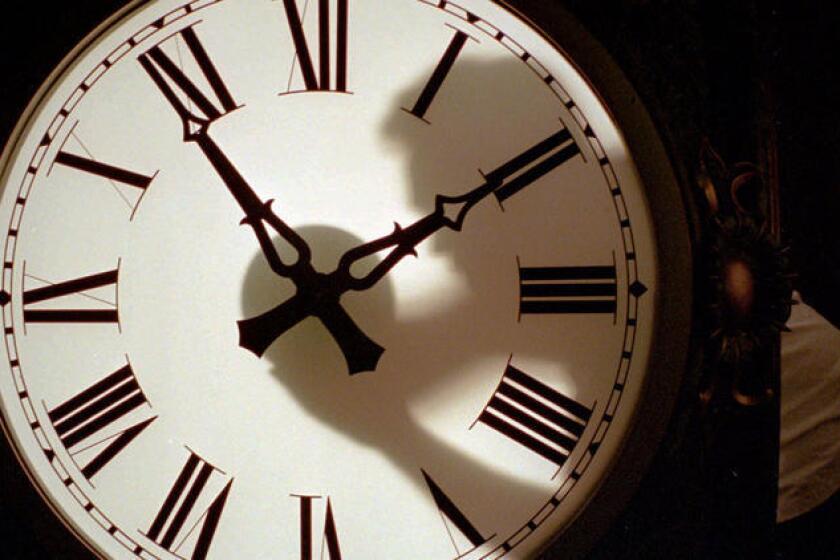Editorial: Good job, senators! Bringing more sunlight into our evenings is way overdue

- Share via
Doesn’t the light in the sky at 7 p.m. feel great? How nice it would be to stay in daylight saving time year-round and not have to adjust the clocks to “fall back” or “spring forward.”
Perhaps U.S. senators were thinking the same thing when they voted swiftly and unanimously on Tuesday, two days after we sprang forward an hour, to make daylight saving time year-round, beginning in November 2023. Of course, it would be even better if the Senate could vote unanimously to strengthen voting rights and offer more support for families with children. But sunlight, at least, appears to be something on which the nation can agree.
For the record:
4:58 p.m. March 16, 2022An earlier version of this editorial said California voters endorsed remaining on permanent daylight saving time by voting for Proposition 7. The proposition merely advocated for an end to the twice-a-year shift.
The twice-annual changing of the clocks is worse than annoying. It causes sleep problems for some, as well as general discombobulation. Studies have found a correlation between the clock shift and accidents and heart attacks. It’s hard to find anyone who loves the change, which makes the only remaining question whether to stick with daylight time year-round or forever shorten our evenings with permanent standard time.
There’s growing momentum in the U.S. and globally to stop switching back to standard time for the four coldest, darkest months of the year. It’s time to dump this 20th-century relic that brings no benefit, and only lots of confusion twice a year.
Our preference is to remain on permanent daylight saving time, which is now observed from March until November. California voters endorsed ending the biannual clock-changing when they passed Proposition 7 in 2018..
Perhaps there used to be a valid reason for standard time — that during the shorter winter months, children would be walking to school in the dark, particularly in northern states. Times have changed. Largely because of parental concerns about safety, the percentage of students who walked or biked to school (even among those who lived within a mile) dropped from 89% in 1969 to 35% in 2009, according to the National Center for Safe Routes to School. And fewer kids live within a mile of campus these days.
Shifting to more sunshine later in the day allows kids more time to be active. And that’s something they need, according to the American Heart Assn., which says most U.S. kids aren’t getting the hour of activity they need each day. Getting them off their electronic devices is another matter; even daylight saving time doesn’t cure everything.
Daylight time also is better for the economy, with consumers spending more as the extra daylight provides time for more activity outside the home.
Now that we’re (mostly) all agreed, the House of Representatives and President Biden should pass this law. Aside from being the right thing to do, a quick, uncontentious passage would at least make it look like Washington can get things done.
Of course, no matter how we rejigger our clocks, it won’t affect the movement of the planet around the sun. Winter days will still be shorter; they just won’t feel as short if there are more daylight hours after school and work.
More to Read
A cure for the common opinion
Get thought-provoking perspectives with our weekly newsletter.
You may occasionally receive promotional content from the Los Angeles Times.











